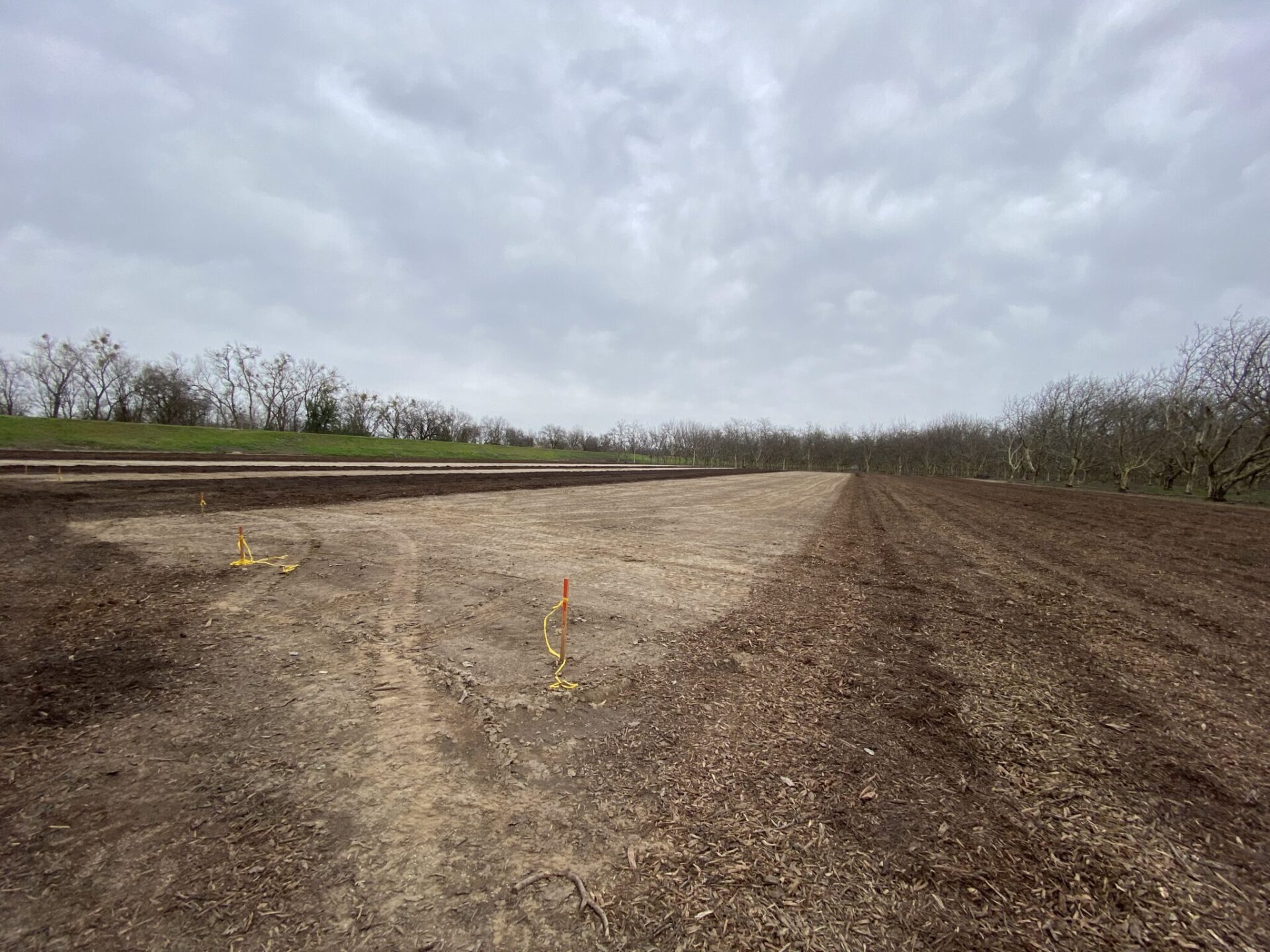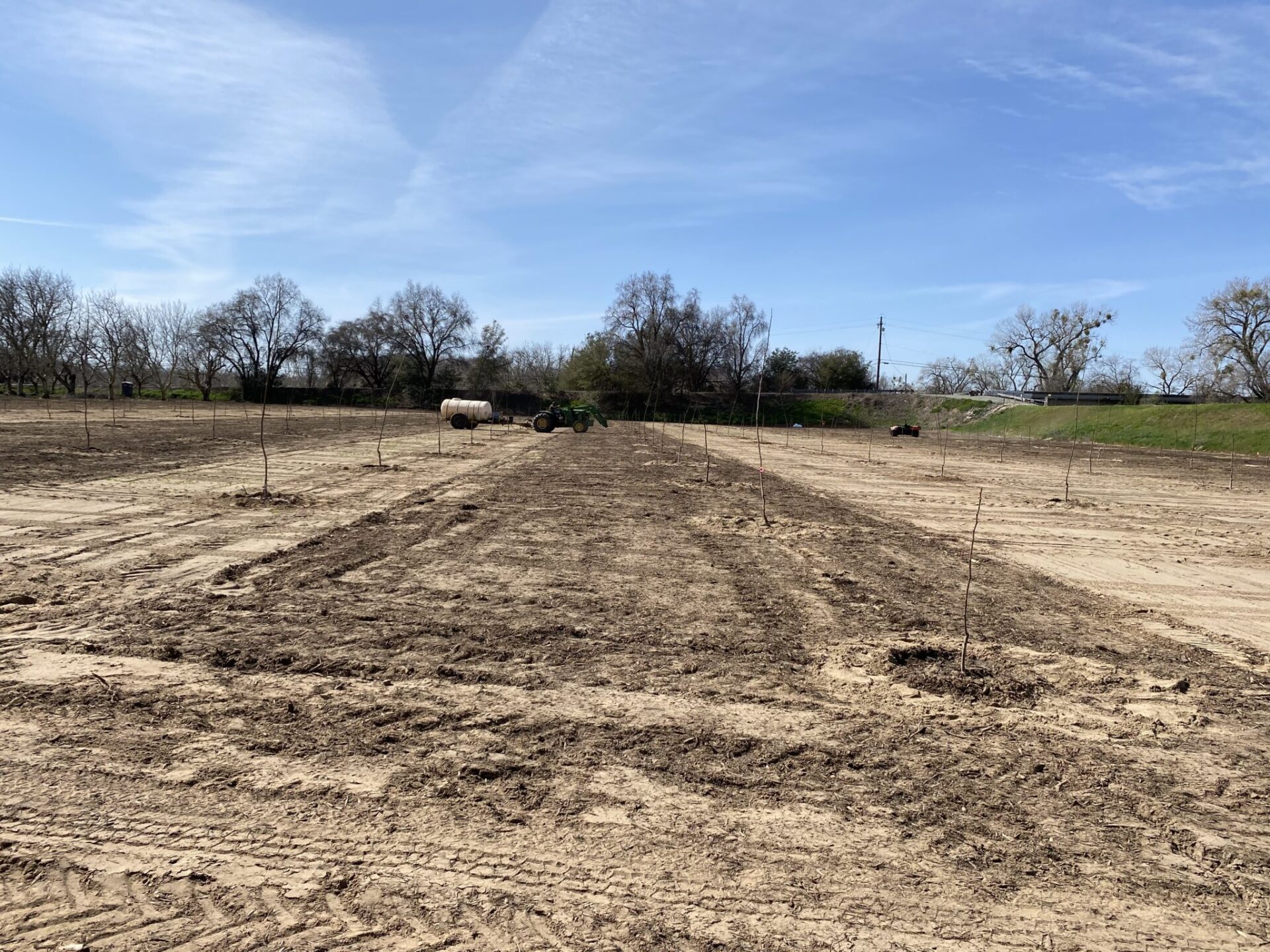
Whole-orchard recycling (WOR) is the on-site grinding or chipping of whole trees during orchard removal, then the chips are incorporated into the soil prior to replanting. This technique is currently being used in almond and now, Luke Milliron, UCCE orchard systems advisor for Butte, Glenn and Tehama counties, has started research in the Sacramento Valley for WOR in walnuts.
“We’re a long way behind the almonds, where Brent Holtz (UCCE farm advisor, San Joaquin County) had the original trial at the Kearney Agricultural Research and Extension Center,” Milliron said, and since then, almond growers started trying WOR on their own.
“One or two walnut growers have done it, but we still haven’t seen it in a randomized, replicated, scientific way that it works or what management techniques we would need to adjust around it,” Milliron said. “There is a lot of research that needs to be done before growers start using it.
“We’re very much in the initial research phases now, so I wouldn’t encourage growers necessarily to do this because we haven’t evaluated all of the risks,” Milliron said.
Tree Removal
Milliron’s first trial was in 2018, and he calls it the “chipapocalypse” because everything that could go wrong, went wrong in that trial. He’s currently started a new, replicated trial and just finished planting trees in the southern Sacramento Valley.
Milliron’s tree removal for the new research is the same practice that they’re currently using in almond.
Research has found that it’s actually not efficient to use the single large rototiller type machine that pushes the tree over and grinds and incorporates it in place, Milliron said. “It’s much more efficient to remove the trees and chip them up with several different machines.”
The trees are chipped in a single location, a manure spreader is used to then spread out the chips and incorporate them through tillage, Milliron said.
The closure of biomass power plants has resulted in a lower value for the woodchips, which used to cover the cost of orchard removal. In the Sacramento Valley, burning remains the standard method of tree removal. When it costs just a few dollars an acre for a burn permit in the Sacramento Valley, push and burn is the economic approach. This isn’t the case in the San Joaquin Valley, where it costs $400 to $500 an acre for permitted burning and most of that practice is being phased out due to regulation.
Milliron believes it’s only a matter of time before the Sacramento Valley sees similar regulations. “We’re going to end up with the same situation that the San Joaquin Valley is in where it’s going to be potentially much more expensive to burn,” he said, and growers will have to determine what method is more affordable.
“Right now, it may not make financial sense to do whole-orchard recycling in the Sacramento Valley either for almonds or walnuts, but with our wildfire problems and our need to have burn permits for forestry, I think that will be changing in the coming years,” Milliron said.
The California Air Resources Board on Feb. 25, announced action to phase-down agricultural burning in the San Joaquin Valley by Jan. 1, 2025.
Disease Concerns
There has been concern that incorporating the chips in the almond orchards could increase disease. To date, there hasn’t been an increase in disease in almonds with this method, Milliron said, and he’s hoping for the same result in walnuts.
At Milliron’s current research site, there were massive old root systems that were chipped and incorporated before planting the second generation walnut orchard. These root systems had crown gall, oak root fungus and root lesion nematode.
“We’ll see whether there’s increased disease or not,” Milliron said, adding currently it’s way too soon to know.
Milliron’s first research with WOR found root lesion nematodes, and the field was fumigated with Telone® II. Two years later, the lesion nematode levels have remained almost nonexistent in both the chipped and non-chipped areas.
The new research site is unfumigated because of its small size (four acres), a problem that many growers with small replant sites face, he said. Vermicompost was applied in the planting hole and around the tree at planting. The lab of Dan Kluepfel, a USDA pathologist based at UC Davis, has data supporting the idea that the microorganisms contained in some vermicompost may be able to outcompete soilborne pathogens.
“Ideally, we would like to do some of the more sophisticated studies, like researchers have done in almonds, where you have whole-orchard recycling vs. complete tree removal and you have fumigation vs. non-fumigation,” Milliron said, adding he would also like to eventually have a future study that is layered with anaerobic soil disinfestation.
Tree Nutrition
Milliron didn’t apply nitrogen in the planting hole. Past walnut research has shown under normal circumstances there was no advantage to putting nitrogen in the planting hole, or other nutrients for that matter.
“There will be mineral nutrients applied around the tree, and then watered in, that I’ll carefully document in this first year,” Milliron said, adding the new research site will be receiving nitrogen in the first year, and early leaf analysis will be done to ensure the trees are receiving sufficient nutrition.
Soil Types
Milliron’s first “chipapocalypse” demonstration site and the new research site were both planted on very sandy ground.
“It just happened to be that way. They’re both right next to rivers, and that is just not representative of large portions of Central Valley walnut ground,” Milliron said.
He intends to test on clay and loam soils, too, to determine the breakdown rate of the woodchips. It’s important to research in different soil types, but it will take a number of years and more trials, he said.
Milliron’s new site was planted and replanted in walnuts, but he thinks researching different combinations of WOR, whether it be almond to walnut or walnut to pistachio or prune, is important, too.
“I would always be most concerned and most interested with the same crop followed by the same crop because that is where you’re going to have the highest potential disease pressure, the highest potential nematode pressure,” Milliron said.
Just like in almond, the lifespan of walnut orchards isn’t what it used to be. Old cost studies for almond and walnut in the 1950s and 60s projected much longer lifespans for both orchard systems. It’s unknown whether the reduced longevity is due to more intensive farming or, Milliron suspects, increased disease pressure that is reducing the longevity.

Potential Benefits
Milliron hopes to find several benefits of WOR through his research and says he’s a believer—a Brent Holtz woodchip believer. “We hope that woodchips will solve all the world’s problems,” he joked, but more seriously he said, “I am hoping to document a lot of the great things that Brent’s been able to document.”
Some of these benefits include:
- Increased growth or at least the same growth without stunting the trees.
- Increased nutrients in the leaves.
- Increased organic matter in the soil.
- Reduced water stress from increased organic matter and water holding capacity in the soil.
- Increased yield.
Milliron has been intrigued by some of the results that Holtz and others have found using a pressure chamber to show that trees with whole-orchard recycling are less water stressed, which would hopefully increase yield, he said.
Milliron has seen a lot of interest in WOR from walnut growers, but he’s also urging caution because WOR in walnuts is still largely unresearched. Still, he’s hopeful that with the new research site, he will start getting solid data to report on very soon.
Currently, Milliron has his WOR on walnuts research in the Sacramento Valley, and Mohamed T. Nouri, a UCCE orchard systems advisor in San Joaquin County, will be initiating a walnut WOR project in 2021 in the Central Valley.















